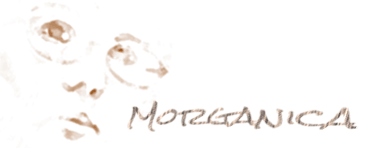There’s gotta be some kind of unwritten law that says the longer you work glass, the stingier you get with the heat.
When I started in torchwork, I nuked the blazes out of whatever glass went on the mandrel. The resulting drippy mess was drippy, wonky in shape and hard to control. The technical term for this is “making blobs” and I was VERY good at it.
A good instructor clucked his tongue and yanked my hand back from the torch; immediately, shaping got easier. I learned to stay out of the flame when not absolutely necessary, the glass cooled down and handed back a LOT more control…and my shapes got better.
Same with glassblowing. I learned to rely on cooler glass and my own ability instead of hoping that a dip in the gloryhole would fix everything, and it greatly helped my control of the final form.
Not surprisingly, the same thing goes with most kilnforming. Longer, cooler firings give me (surprise) more control over texture, color and line so that about the only time my kiln passes the 1500F mark these days is when I’m casting relatively thick pieces. Otherwise, it’s a cold day in…kiln…when the controller reads higher than 1325F.
See, I just flat out like the look of components, especially frit, before they’re fired. It wasn’t until I was complaining about it to Catharine Newell in a class that I realized that, however. “It’s too bad this has to melt together,” I pouted, pointing to a really nice glasspowder composition that was going to go from ethereal sherbets to hot oranges and reds the minute it was fired.
“Well,” said Catharine calmly, “If you like it better, don’t heat it so much.”
Sort of a “duh” moment. Since then, when I’m not casting I’m seeing just how little heatwork I can get away with and still have a sturdy piece. In other words, I’m tack-fusing.
Tack-fusing is a wacky beast. Get it right, and you have a gloriously crystalline piece that looks a lot more fragile than it really is. Get it wrong, and you’ve got a couple hundred glass crumbles on the floor.

wow…yes duh…there I am trying to read your blog and these magnificent picture are flashing past on the computer…..had to stop reading and watch them….love them…thanks
Your work is so beautiful, Cynthia. Love the pictures with this post. Thank you for the gifts you give so many of us with your wise advice and comments.